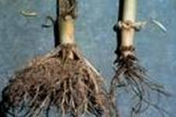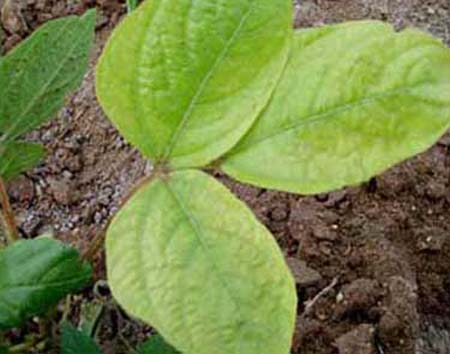CO 2, Pusa Komal , PKM 1 and Arka Garima Co(CP) 7, Paiyur 1, VBN 1 Co 6, VBN 2
June – July (Rainfed), February – March (irrigated).
45 x 15 cm
Before flowering, the tendrils should be pinched thrice for getting bushy plants.
Give one hoeing and weeding on 25th day after sowing.
1.Gram pod borer: Helicoverpa armigera
| |
Symptoms of damage
Management
| |
2.Spotted pod borer: Maruca testulalis
| |
Symptoms of damage
Management:
| |
3.Spiny pod borer: Etiella zinckenella
| ||||
Symptoms of damage
Management
| ||||
4.Blue butterfly: Lampides boeticus | |
Management Spray any one of the following insectcides (Spray fluid 500 l/ha)
| |
5.Grass blue butterfly: Euchrysops cnejus
| |
Symptoms of damage
Management of pod borer complex
| |
6.Bean Aphids: Aphis craccivora
| |||
Symptoms of damage
Management:
| |||
7.Leaf hopper: Empoasca kerri
| |
Symptoms of damage
Management:
| |
8.Pod bugs: Riptortus pedestris
| |
Management: Spray any one of the following insecticides (Spray fluid 500 l/ha)
| |
9.Lab lab bug or Stink bug: Coptosoma cribraria
| |||
Symptoms of damage
Management-
10.Whitefly: Bemisia tabaci
Symptoms of damage
Management of sucking pests
| |||
1.Root rot and Damping off: Pythium, Rhizoctonia, Macrophomina

| Symptom | |
Management
| |
2.Southern blight: Sclerotium rolfsii

| Symptoms | |
| |
3.Cowpea mosaic Virus

| Symptom | |
Management
| |
4.Fusarium wilt: Fusarium oxysporum

| Symptom | |
Management
| |
1.Potassium :

Deficiency Symptoms :
Correction Measure :
Foliar spray of KCl 1% can control this deficiency.
2. Sulphur

Deficiency Symptoms
Correction Measure
Foliar spray of CaSO4@0.5-1.0%
3.Boron

Deficiency Symptoms
Correction Measure
Foliar spray of Borax 0.2% at fortnightly intervals.
4.Iron

Deficiency Symptoms :
Correction Measure :
Foliar spray of FeSO4@0.5%
5.Manganese

Deficiency Symptoms :
Correction Measure :
